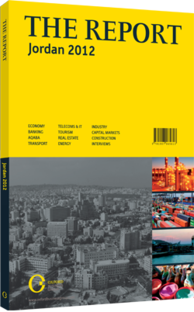Filling in the gaps: Three major projects help to turn Aqaba into a centre for tourism
One of Jordan’s premier tourism destinations, Aqaba boasts the highest number of visitor nights outside of the capital, Amman, though as in the rest of the country, the local tourism sector has been negatively affected by regional instability and the eurozone crisis. According to statistics from the Ministry of Tourism and Antiquities, 460,286 people spent a combined total of 910,331 visitor nights in hotels in Aqaba in the first 10 months of 2011, which represented a fall of 9.6% visitor nights on the same period in 2010.
HIGH-END FOCUS: Aqaba’s tourism accommodation market is tilted towards high-end hotels. Well over half (61.6%) of the 3803 hotel rooms available as of December 2010 were in four- and five-star establishments. Five-star hotels accounted for by far the greatest number of rooms of any individual star category at 41.4%, compared to just 4.3% for one-star hotels. Some in the sector have said that concentrating more on the high-end market makes sense for Aqaba and Jordan’s leisure/beach tourism segment given the relatively small amount of coastline the country has (all to be found on the Gulf of Aqaba), which makes an alternative strategy of seeking large numbers of budget holidaymakers impracticable. Nevertheless, while the focus is on high-end resorts, the authorities are also working to increase the availability and attractiveness of mid-range options. In September 2011 the Aqaba Special Economic Zone Authority (ASEZA) announced plans to allocate a portion of beach to hotels without their own private access, which should give a boost to the three- and four-star hotel segments in particular.
DEVELOPMENTS: Local authorities are counting on the three major real estate projects being developed (namely Ayla Oasis, Marsa Zayed and Saraya Aqaba) to help transform Aqaba into a major tourism centre (see overview). “The three projects will fill the remaining gaps in Aqaba in terms of leisure and activities,” said Nasser Madadha, chief commissioner of ASEZA and chairman of Aqaba Development Corporation (ADC). “Ayla, for example, will have a convention centre and a Greg Norman golf course, and is building what will be one of the best shopping centres in the Middle East.” Plans to develop the Red Sea Astrarium theme park in Aqaba, which were announced in May 2011, should also boost the availability of activities beyond traditional resort entertainment such as beach and pool activities, snorkelling and scuba diving, which will likely result in an increase in visitor numbers.
Once completed, such projects will also transform the accommodation sector. The construction of the three major projects will almost double the number of hotel rooms available in Aqaba. Recent hotel openings include the 175-room DoubleTree by Hilton Aqaba, which began operating in March 2011 and was both the first international-brand four-star hotel in the city and the first DoubleTree-branded hotel in the region.
CRUISES: Moreover, Aqaba is an increasingly important cruise ship destination. Although the number of cruise ships stopping at Aqaba in 2011 dropped to 113 from 151 the previous year, this was still almost double the figure in 2006. Cruise arrivals were also down from 40 to 19 in the first two months of 2012. Tourist arrivals (not including arrivals from Nuwaiba in Egypt) through Aqaba port in 2011 stood at 71,276. This was slightly down on 2010’s figure of 74,438. However, 2010 saw a big increase on numbers in previous years, which had ranged between 40,000 and 50,000. The development of a new cruise terminal in the town itself rather than at the current location in the middle port as part of the Marsa Zayed project should help boost tourism arrivals to Aqaba. So too should a project currently under way to expand passenger capacity at Aqaba’s King Hussein International Airport’s to 600,000 a year, from 500,000.
“Aqaba cannot be compared to any other tourist destination, given the variety of activities it has to offer,” Madadha said. “It has the last reef in the northern hemisphere, and beautiful weather all year round, with a constant sea temperature due to the depth of the waters. Furthermore, it is a duty-free shopping zone.”
You have reached the limit of premium articles you can view for free.
Choose from the options below to purchase print or digital editions of our Reports. You can also purchase a website subscription giving you unlimited access to all of our Reports online for 12 months.
If you have already purchased this Report or have a website subscription, please login to continue.

